FBXW24 controls female meiotic prophase progression by regulating SYCP3 ubiquitination
- PMID: 35858239
- PMCID: PMC9299759
- DOI: 10.1002/ctm2.891
FBXW24 controls female meiotic prophase progression by regulating SYCP3 ubiquitination
Abstract
Background: An impeccable female meiotic prophase is critical for producing a high-quality oocyte and, ultimately, a healthy newborn. SYCP3 is a key component of the synaptonemal complex regulating meiotic homologous recombination. However, what regulates SYCP3 stability is unknown.
Methods: Fertility assays, follicle counting, meiotic prophase stage (leptotene, zygotene, pachytene and diplotene) analysis and live imaging were employed to examine how FBXW24 knockout (KO) affect female fertility, follicle reserve, oocyte quality, meiotic prophase progression of female germ cells, and meiosis of oocytes. Western blot and immunostaining were used to examined the levels & signals (intensity, foci) of SYCP3 and multiple key DSB indicators & repair proteins (γH2AX, RPA2, p-CHK2, RAD51, MLH1, HORMAD1, TRIP13) after FBXW24 KO. Co-IP and immuno-EM were used to examined the interaction between FBXW24 and SYCP3; Mass spec was used to characterize the ubiquitination sites in SYCP3; In vivo & in vitro ubiquitination assays were utilized to determine the key sites in SYCP3 & FBXW24 for ubiquitination.
Results: Fbxw24-knockout (KO) female mice were infertile due to massive oocyte death upon meiosis entry. Fbxw24-KO oocytes were defective due to elevated DNA double-strand breaks (DSBs) and inseparable homologous chromosomes. Fbxw24-KO germ cells showed increased SYCP3 levels, delayed prophase progression, increased DSBs, and decreased crossover foci. Next, we found that FBXW24 directly binds and ubiquitinates SYCP3 to regulate its stability. In addition, several key residues important for SYCP3 ubiquitination and FBXW24 ubiquitinating activity were characterized.
Conclusions: We proposed that FBXW24 regulates the timely degradation of SYCP3 to ensure normal crossover and DSB repair during pachytene. FBXW24-KO delayed SYCP3 degradation and DSB repair from pachytene until metaphase II (MII), ultimately causing failure in oocyte maturation, oocyte death, and infertility.
Keywords: FBXW24; SYCP3; meiotic prophase; oocyte; ubiquitination.
© 2022 The Authors. Clinical and Translational Medicine published by John Wiley & Sons Australia, Ltd on behalf of Shanghai Institute of Clinical Bioinformatics.
Conflict of interest statement
The authors declare no conflict of interest.
Figures
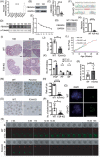
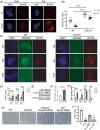
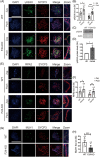
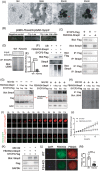
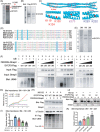
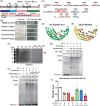

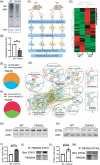
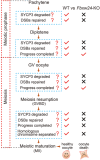
Similar articles
-
Molecular analysis of the effects of steroid hormones on mouse meiotic prophase I progression.Reprod Biol Endocrinol. 2019 Dec 2;17(1):105. doi: 10.1186/s12958-019-0548-x. Reprod Biol Endocrinol. 2019. PMID: 31791345 Free PMC article.
-
Hormad1 mutation disrupts synaptonemal complex formation, recombination, and chromosome segregation in mammalian meiosis.PLoS Genet. 2010 Nov 4;6(11):e1001190. doi: 10.1371/journal.pgen.1001190. PLoS Genet. 2010. PMID: 21079677 Free PMC article.
-
Genetic evidence that synaptonemal complex axial elements govern recombination pathway choice in mice.Genetics. 2011 Sep;189(1):71-82. doi: 10.1534/genetics.111.130674. Epub 2011 Jul 12. Genetics. 2011. PMID: 21750255 Free PMC article.
-
Regulation of Meiotic Prophase One in Mammalian Oocytes.Front Cell Dev Biol. 2021 May 20;9:667306. doi: 10.3389/fcell.2021.667306. eCollection 2021. Front Cell Dev Biol. 2021. PMID: 34095134 Free PMC article. Review.
-
Exiting prophase I: no clear boundary.Curr Genet. 2018 Apr;64(2):423-427. doi: 10.1007/s00294-017-0771-y. Epub 2017 Oct 25. Curr Genet. 2018. PMID: 29071381 Review.
Cited by
-
Skp1 proteins are structural components of the synaptonemal complex in C. elegans.Sci Adv. 2024 Feb 16;10(7):eadl4876. doi: 10.1126/sciadv.adl4876. Epub 2024 Feb 14. Sci Adv. 2024. PMID: 38354250 Free PMC article.
-
Premeiotic deletion of Eif2s2 causes oocyte arrest at the early diplotene stage and apoptosis in mice.Cell Prolif. 2024 Dec;57(12):e13718. doi: 10.1111/cpr.13718. Epub 2024 Jul 24. Cell Prolif. 2024. PMID: 39044637 Free PMC article.
-
Baicalin targets YTHDC2 and alleviates male reproductive toxicity caused by co-exposure to nanoplastics and manganese through m6A-dependent pathway.J Nanobiotechnology. 2025 Jun 18;23(1):450. doi: 10.1186/s12951-025-03535-3. J Nanobiotechnology. 2025. PMID: 40533738 Free PMC article.
-
The deubiquitinase Usp7 in Drosophila melanogaster is required for synaptonemal complex maintenance.Proc Natl Acad Sci U S A. 2024 Sep 3;121(36):e2409346121. doi: 10.1073/pnas.2409346121. Epub 2024 Aug 27. Proc Natl Acad Sci U S A. 2024. PMID: 39190345 Free PMC article.
-
Elucidating the role of FBXW4 in osteoporosis: integrating bioinformatics and machine learning for advanced insight.BMC Pharmacol Toxicol. 2025 Jan 29;26(1):20. doi: 10.1186/s40360-025-00844-z. BMC Pharmacol Toxicol. 2025. PMID: 39881357 Free PMC article.
References
-
- Miyamoto T, Hasuike S, Yogev L, et al. Azoospermia in patients heterozygous for a mutation in SYCP3. Lancet. 2003;362(9397):1714‐1719. - PubMed
Publication types
MeSH terms
Substances
LinkOut - more resources
Full Text Sources
Other Literature Sources
Research Materials
